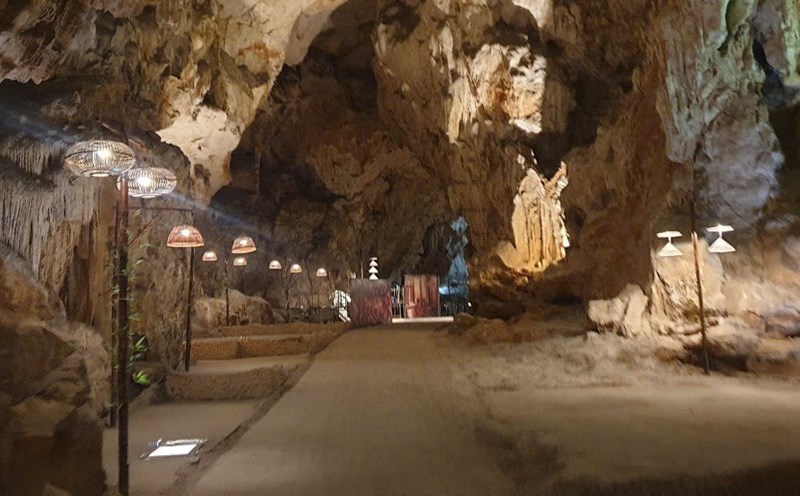Imagine: in the quiet darkness, the sound of the violin resounds, against a cliff that is millions of years old. Long notes, blending into the breath of nature, create a mysterious, enchanting space.
But when the lights were on, public opinion exploded.
On the one hand, it is a creative direction to exploit tourism, improve tourist experience and bring revenue to the locality. One side is concerned about the negative impact on the ecosystem, landscape and long-term value of heritage.
This is not the first time that the question of the line between conservation and exploitation has been raised.
In the world, cave music is not strange. In 2018 in Tennessee (USA), a series of concert programs were held in the heart of a large cave, creating a special sound experience, blending nature and art. In Vietnam, the Song Moi Symphony orchestra of conductor Dong Quang Vinh performed at the Dragon Jade cave for Tet 2025. 20 years before that was a grand music night of musician Do Hong Quan and the Vietnam Dance Theater in Dau Go cave. These events show that if organized carefully, art can go hand in hand with nature.
However, there are times when projects do not end in glory.
Many limestone caves in China used to be majestic destinations, but tourism pressure has caused them to deteriorate severely. Human breath changes humidity, artificial light promotes moss and mold development, concrete steps serve tourists, causing the landscape to deform. The story of Jeita Grotto cave (Lebanon) is also a valuable lesson: After opening a large tourist area, the magical sparkling rocks have gradually eroded, losing their original beauty.
Caves are a fragile ecosystem where light, sound, moisture, and human presence can all have a lasting impact. These lessons raise a big question: what is the line between exploiting natural resources and destroying them? We can create new values from heritage, but what is the price?
In the story of Doi Cave, the most important thing is not whether to prohibit or allow, but how to implement it.
A sustainable exploitation plan needs to be based on specific scientific assessments, transparency in implementation processes and the participation of local communities. Conservation does not mean completely closing off development, but development cannot be an excuse to destroy inherent natural values.
If Quang Ninh does it properly, each concert that vibrates the hearts of people in the cave can become an interesting symphony between culture and economy. But if I am wrong, it will be a responsibility to a masterpiece of nature, breaking down the values of millions of years. The problem is not whether we should organize a concert in the cave or not, but we must be good enough to play the right melody of nature!











